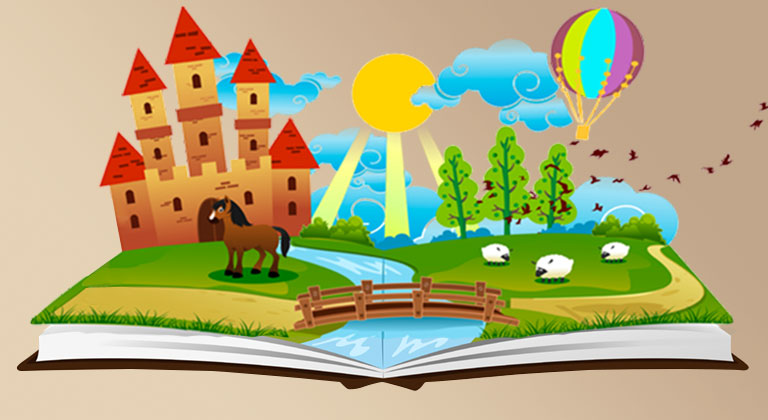Location, Location, Location: The Power of Writing and Real Estate
The setting of a story is one of the most important elements that a writer should focus on, as it sets the tone and feel for the entire book. The tips below include some fantastic examples of how and why successful authors pay so much attention to where their book is located. It’s no coincidence that some of the best and most beloved novels are often remembered most for the rich worlds they create in the minds of the readers.
One way to truly make your writing stand out is to make the setting for your story as much a character as your hero.
In 2006, I returned to the northeastern United States after a long hiatus, and I brought with me a copy of Stephen King’s Bag of Bones. That book, and that return visit, have been inextricably linked in my mind ever since; and it demonstrated to me the hypnotic power of a richly conceived setting for a story.
Stephen King, of course, is famous for setting the majority of his stories in Maine – and Bag of Bones was no exception. Set in an unincorporated town known only as TR-90, King manages to evoke an incredibly visceral feel for the creepy lake and oppressive town that serves as the backdrop for his ghost story; and details such as the dialect of the locals and even the way storm clouds are described bring the entire tale vividly to life.
“The sun had burned through and the day had gone from dull to dazzling, yet in the west black-satin thunderheads continued to stack up. It was as if night has burst a blood-vessel in the sky over there.”
I was returning to America in October, and to me the same storm-filled skies hung overhead, and the trees had the same richly golden leaves as the ones described in the story. Stephen King’s Bag of Bones managed to truly capture my imagination and I found it amazing to feel like I was experiencing the story even when I wasn’t pouring through its pages.
If you look at other successful or notable books, you’ll often find that the setting of a story is praised in a similar fashion – even when that setting is fictional. The best-selling books of all-time, for example, include Harry Potter and the Philosopher’s Stone, Alice’s Adventures in Wonderland and The Lord of the Rings – all of which occur in vividly realized fictional settings that people discuss as much as the characters in the story.
The Lion, the Witch and the Wardrobe, The Bridges of Madison County and Watership Down have all sound over 50 million copies, and whether it’s Narnia or Iowa, the setting for those books is equally evocative. Watership Down has a special place in my heart because it’s set in the rolling county downs of Hampshire, in England, which is where I was born and raised.
This is why one great technique to improve your writing is to truly delve into the location of your stories.
And the settings of a story don’t necessarily have to be exotic, or distant – as demonstrated by The Bridges of Madison County. What they have to be is real. Real in the reader’s imaginations, whether they actually exist or not.
The Devil’s in the Details
Some book series are all set in the same location, which makes writing about it a lot more consistent for the author. Hogwarts, for example, was the setting for most of the Harry Potter series, and popular author Melissa Foster uses fictional locations like Peaceful Harbor, in Maryland, as the backdrop for one of her romance series.
Other authors see their hero travel around a lot – for example, Lee Child’s Jack Reacher might be in New York for one book and rural Nebraska in the next. This presents a different challenge in bringing the location to life; but it’s no less important.
In all the reading I’ve done, what’s always captured my attention have been the details. It’s not the fact that a character stood on the corner of Broadway and 34th Street, for example – that’s geography. It’s how the scent of roasting chestnuts was in the air from the cart nearby, the Salvation Army Santa was ringing a bell outside a department storefront, and when the wind blew down those great, concrete canyons it cuts through you like a knife.
Those are visceral details that take the reader there, evoking emotion and the memory of sensation, rather than a physical description of a place or building.
The creator of James Bond, Ian Fleming, was both a master and a failure at this. In the beginning of From Russia With Love he includes a page of bland description about the briefing room of the Russian consulate in Istanbul – more to prove how smart and well-connected he was than anything else. It made for boring reading.
But when he writes about drinking raki in a gypsy camp, or a live lobster scuttling away while it’s hindquarters are eaten sushi-style in Japan, it’s impossible not to get swept up in the adventure of the book’s locations. From the color of bark on the trees in Vermont, to the scent of sausages in a Swiss winter village, Fleming has a journalistic way of describing places that really brings them to life in his stories; making them vivid characters of their own.
Snobs deride the writing of Twilight author Stephanie Meyer, but the way she describes the towering forests and churning oceans of Washington State are incredibly evocative – especially compared to the flat heat of Arizona in the taut conclusion of that first book. In the opening paragraphs of Surrender my Love by Melissa Foster, the hero describes the scent of specialty coffee and baked goods as he walks into Jazzy Joe’s Cafe and it instantly describes the feel of the place – an independent coffee shop, with a slightly more adventurous selection that you’d find at Starbucks.
In New York, people eat their pizza with paper napkins and then fold it in half – to devour it with a crunch. In Chicago, they have to dig it out of searing skillets, the cheese stretching in long strands as you pull the steaming deep dish to your mouth. Each of these little details is unique to a specific place – right down to how you’d order ‘pork roll’ in southern New Jersey, or ‘Taylor Ham’ in the north. By incorporating tiny details like this, you can make even the most mundane location – like an unincorporated town in Maine – into a richly vivid setting for your story.
Visualize your Locations
When it comes to your own writing, focusing attention on the setting is a great way to create a more evocative, compelling narrative.
I recommend you go through every scene in your plot-plan and take a moment to visualize the location. Close your eyes, take a deep breath, and think about the sights, smells and feel of the place you’re writing about. Conjure it as vividly as you can in your mind.
For example, if your scene takes place in a woodland grove – what time of year is it? Are the leaves lush and green, and the shade of the canopy a blessed relief from the searing sun? Or are the leaves golden brown, and crunch underfoot as your breath mists in the air. Do your lungs fill with warm humidity, or crisp chill? Do you hear birds overhead? A stream nearby?
Similarly, think of the locations your heroes visit. Does the diner they eat at have paper napkins, or cloth ones? Is the coffee dark and strong, or tepid and weak? Are they playing 50s hits, the local radio station, or is the only noise the traffic roaring outside; making the window panes rattle?
Transport yourself there; and use that visualized setting as a stage for your narrative.
This type of visualization is a very powerful writing technique in and of itself; and the strength of your own connection to your fictional or real location can’t help but find it’s way onto the pages you write.
Less is More
All this being said, you definitely want to follow the Hemingway method when it comes to writing about your location.
The strength of Melissa Foster’s opening lines from Surrender my Love was how she evoked the feel and nature of the coffee ship with a single line of description. The reason the opening of From Russia with Love was so tedious is because Ian Fleming dedicated an entire page to the location of furniture, and the color of the walls.
The power of good writing is not to describe the things in the place, but how they make you feel. Picking just a single line, with a few evocative details, has the potential to paint an entire picture with just a handful of words. Swap out descriptive adjectives for emotional ones – like instead of the waves on a winter ocean being ‘powerful’, write about how they’re ‘churning’ because with good writing that might mirror the way the main character’s stomach is churning as she stands on that same beach.
Description for the sake of it can halt a narrative in its track, so you want to weave the description into the storytelling; using a few choice adjectives and sentences amid the action to paint a picture; rather than writing a paragraph about the setting to begin with. That’s the very essence of ‘showing’ and not ‘telling’ and it makes the reader feel very much like they stand in the same spot as your story’s protagonists.
The Extra Mile
One of the things Ian Fleming is most famous for is his huge array of real places, locations and brands in the James Bond stories.
He doesn’t just have cocktails in Paris, he goes to Harry’s Bar, on Rue Danou (one of my favorite haunts, actually.) He doesn’t just drink champagne, he drinks Taitinger Blanc de Blancs (and misspelled it as Tattinger.) The reason the James Bond movies have become like cinematic Skymall commercials is because Ian Fleming was unapologetic about including his own sartorial tastes in his writing (which was ironic, since James Bond is today viewed as the bastion of class and good taste, whereas the wines he drinks in the book series confirm what Noel Coward always said about Ian Fleming: “He doesn’t know Bollinger from bathwater.”)
Similarly, Jack Reacher doesn’t just use a gun – he uses a Beretta 92FS, or a SIG-Sauer P226 or a Ruger Service Six with .357 rounds. Hugh Laurie, the British actor most famous for playing House, wrote a terrific spy novel called The Gun Seller and explained in interviews that men want specific details about the food their heroes eat, the cars they drive and – yes – the guns they shoot.
And it’s not just a male thing. In Lauren Weisberger’s The Devil Wears Prada there are very specific mentions of beverages, fashion and events because women like the specifics as much as men do. It makes it all real – and relatable. There’s nothing better than being able to visit the location of a story you like and eat at the real cafe the hero frequented, or drink the same bourbon the heroine drowned her sorrows in.
The added benefit of using real locations and brands in your book is that they can say so much about a character without saying anything at all. A guy who drinks Jack Daniels and Coke, for example, is probably a lot more down-to-Earth and blue collar than a man who drinks Hudson Baby Bourbon with a single sphere of ice in it.
A woman who wears a Hermès scarf is probably older and more affluent than a woman who wears a Burberry scarf – and you don’t need to go into her background or life story to establish that. A man who drives a nine-year-old 3-series BMW might be eager to impress despite his limited means, whereas a man who drives this year’s 7-series might be so casually affluent he barely thinks about it as he signs each subsequent lease.
There’s a huge potential to capitalize on characterization with the use of a few cleverly-inserted props; and it is also terrific fun to write them and read about them.
Conclusion
One of the biggest secrets to good writing is to enjoy it, and there’s nothing more enjoyable than writing about places and things you love and are passionate about. By really visualizing and embracing the locations your stories are set in, you can’t help but write more compelling stuff – and it’s a lot more enjoyable to pour those words out onto the paper. I’ve found there’s a kind of magic to it, and when I look at the most famous books and authors I can’t help but see how the location of their stories was always a big part of their success.
Stephen King wouldn’t be where he is without the fictional but oh-so-real towns of Maine he sets his stories in. Tolkien’s Lord of the Rings wouldn’t continue to sell million of copies if Middle Earth didn’t seem so real. This year, some of the top books have featured their settings almost like additional characters; like Sofka Zinovieff’s Putney, set in the islands of Greece, or Crystal Hana Kim’s If You Leave Me, which conjures a vivid portrait of Korea in the 1950s.
Think very vividly about where your story is set, and it will become as real on the page as the characters you insert into it.
The one warning is to use this technique sparingly – like salt on French fries. Fantasy and sci-fi writers often get accused of snarling up their books with ‘world-building’ and that’s possible even if the worlds you’re writing about are real. Follow what I said about how ‘less is more’ and give each scene a visceral sniff of detail, and it will add a rich and delicious layer of flavor to every word you write.











